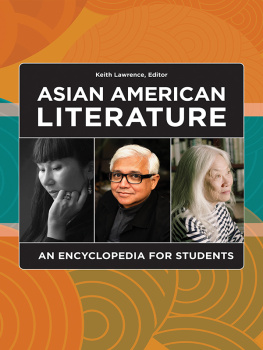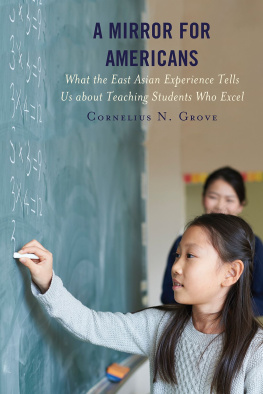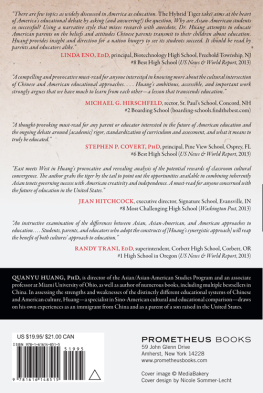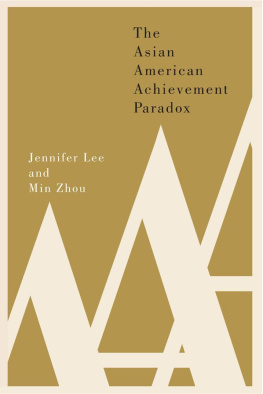Cover
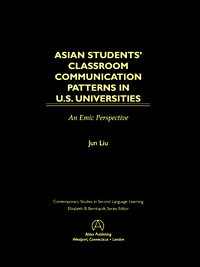
| title | : | Asian Students' Classroom Communication Patterns in U.S. Universities : An Emic Perspective Contemporary Studies in Second Language Learning |
| author | : | Liu, Jun. |
| publisher | : | Greenwood Publishing Group |
| isbn10 | asin | : | 1567506208 |
| print isbn13 | : | 9781567506204 |
| ebook isbn13 | : | 9780313016028 |
| language | : | English |
| subject | English language--Study and teaching--Asian speakers, English language--Study and teaching--United States, Intercultural communication--United States, Students, Foreign--United States. |
| publication date | : | 2001 |
| lcc | : | PE1130.A2L58 2001eb |
| ddc | : | 378.1/9829995073 |
| subject | : | English language--Study and teaching--Asian speakers, English language--Study and teaching--United States, Intercultural communication--United States, Students, Foreign--United States. |
Page i
ASIAN STUDENTS CLASSROOM COMMUNICATION PATTERNS IN U.S. UNIVERSITIES
Page ii
Recent Titles in Contemporary Studies in Second Language Learning
The Catalan Immersion Program: A European Point of View
Josep M. Artigal
A Developmental Psycholinguistic Approach to Second Language Teaching
Traute Taeschner
Reading Development in a Second Language: Theoretical, Empirical and Classroom Perspectives
Elizabeth B. Bernhardt
Bilingualism and Testing: A Special Case of Bias
Guadalupe Valds and Richard A. Figueroa
Vygotskian Approaches to Second Language Research
James P. Lantolf and Gabriela Appel
Input Processing and Grammar Instruction in Second Language Acquisition
Bill VanPatten
Listen to the Silences: Mexican American Interaction in the Composition Classroom and the Community
Kay M. Losey
Words Into Worlds: Learning a Second Language Through Process Drama
Shin-Mei Kao and Cecily ONeill
Reading and Recall in L1 and L2: A Sociocultural Approach
Regina Roebuck
Annotated Bibliography of Scholarship in Second Language Writing: 19931997
Tony Silva, Colleen Brice, and Melinda Reichelt
Page iii
ASIAN STUDENTS CLASSROOM COMMUNICATION PATTERNS IN U.S. UNIVERSITIES
An Emic Perspective
Jun Liu
Contemporary Studies in Second Language Learning
Elizabeth B. Bernhardt, Series Editor

Ablex Publishing
Westport, ConnecticutLondon
Page iv
Library of Congress Cataloging-in-Publication Data
Liu, Jun.
Asian students classroom communication patterns in U.S. universities: an
emic perspective / Jun Liu.
p. cm.(Contemporary studies in second language learning)
Includes bibliographical references (p. ) and indexes.
ISBN 1567506208 (alk. paper)
1. English languageStudy and teachingAsian speakers.
2. English languageStudy and teachingUnited States. 3. Intercultural
communicationUnited States. 4. Students, ForeignUnited States. I. Title.
II. Series.
PE1130.A2 L58 2001
378.19829995073dc21 2001022176
British Library Cataloguing in Publication Data is available.
Copyright 2001 by Jun Liu
All rights reserved. No portion of this book may be
reproduced, by any process or technique, without the
express written consent of the publisher.
Library of Congress Catalog Card Number: 2001022176
ISBN: 1-56750-620-8
First published in 2001
Ablex Publishing, 88 Post Road West, Westport, CT 06881
An imprint of Greenwood Publishing Group, Inc.
www.ablexbooks.com
Printed in the United States of America

The paper used in this book complies with the
Permanent Paper Standard issued by the National
Information Standards Organization (Z39.481984).
10 9 8 7 6 5 4 3 2 1
Page v
Contents
Preface | vii |
Introduction: My Journey of Adaptive Cultural Transformation | xi |
| Asian Students in U.S. Universities | |
International Students in the United States | |
Cross-Cultural Adaptation | |
Intercultural Communication | |
Classroom Communication | |
| Studying Asian Students Participation in American Classrooms | |
Classroom Participation Research | |
A Multicase Ethnographic Study | |
Participant Profiles | |
| Understanding Asian Students Classroom Communication Patterns | |
Classroom Communication Patterns | |
Synthesis of Perceptions | |
| Factors Affecting Asian Students Classroom Communication Patterns | |
Factors Across the Individual Participants | |
Synthesis of Factors | |
Study Findings | |
Page vi
| Interpreting Silence from an Asian Perspective | |
A Theoretical Framework of Silence | |
Silence in U.S. Academia | |
Behind the Mask of Asian Face-Saving and Politeness | |
The Willingness to Speak Up in Content Courses | |
| Asian Students Adaptive Cultural Transformation | |
The Concept of Adaptive Cultural Transformation | |
Adaptive Cultural Transformation Processes | |
Adaptive Cultural Transformation Competence | |
Recommendations | |
Epilogue | |
References | |
Author Index | |
Subject Index | |
Page vii
Preface
Asian Students Classroom Communication Patterns in U.S. Universities examines what adaptive cultural transformation means to Asian students and what Asian students adaptive cultural transformation means to those around them by focusing on one social and academic setting: content classes in American colleges and universities where Asian students are immersed with American students and other international students. This book has three goals. The first goal is to explore and describe Asian students classroom communication patterns through their oral classroom participation modes in their content courses with reference of their perceptions of classroom participation as influenced by the interaction among sociocultural, linguistic, cognitive, affective, and pedagogical factors. The second goal is to explain and interpret Asian students classroom communication patterns in association with their various perceptions from an emic perspective. The third goal is to call for Asian students awareness and acquisition of adaptive cultural transformation competence. Because of my own journey of adaptive cultural transformation from an Asian student to an Asian professor in the United States, I believe that Asian students should strive to achieve adaptive cultural transformation competence consisting of social identity negotiation skills, cultural-sensitivity knowledge and mindful reflexivity, and communicative competence. Asian students construction of their cultural transformation competence also necessitates understanding and support from various communities in the target culture, including ESL and content course instructors, American peers and other international students, American college and university administrators, and other professional resources.
Next page


